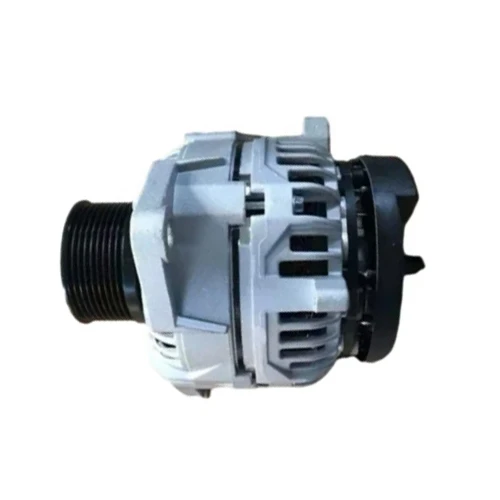Explore China’s mastery of new energy vehicle AC alternators (commonly referred to as Alternators).
The Core of Efficiency: China’s Mastery of AC Alternators for New Energy Vehicles
While the term “alternator” traditionally refers to a device that generates alternating current in a conventional car, in the context of New Energy Vehicles (NEVs), we are discussing the sophisticated AC electric motor[https://www.jltalternator.com/news/automobile-ac-generator.html] that serves as the primary source of propulsion. China’s dominance in the NEV market is not just about battery technology; it is fundamentally rooted in its strategic mastery of these core components—the electric motors that convert electrical energy into motion with breathtaking efficiency and precision.
This mastery is a multi-faceted achievement, built on a foundation of strategic policy, massive R&D investment, vertical integration, and relentless innovation.
1. The Strategic Foundation: Policy as a Catalyst
China’s journey began with a clear national vision. The “Made in China 2025” initiative explicitly identified New Energy Vehicles as a strategic pillar. This was backed by:
Subsidies and Tax Breaks: Initially, government subsidies were tied to performance metrics like range and energy efficiency, which directly incentivized the development of more efficient and powerful motors.
Creating a Market: Policies favoring NEVs in major cities (e.g., easier license plate allocation) created a massive domestic market, providing a crucial testing ground and volume scale for motor manufacturers.
2. The Technical Prowess: Key Areas of Mastery
Chinese engineers and companies have excelled in optimizing the most common type of motor for EVs: the Permanent Magnet Synchronous Motor (PMSM). Their expertise manifests in several critical areas:
a. Ultra-High Efficiency:
Chinese-made PMSMs consistently achieve peak efficiencies of over 97%. This means almost all the electrical energy from the battery is converted into rotational force, minimizing waste as heat. This directly translates to longer range per kilowatt-hour of battery capacity—the single most important metric for consumers.
b. Power and Torque Density:
Chinese manufacturers have mastered the art of making motors that are both small, light, and incredibly powerful. By using:
High-grade Neodymium Iron Boron (NdFeB) Magnets: China controls a significant portion of the global supply chain for these rare-earth materials, a critical strategic advantage.
Advanced Cooling Systems: Innovative oil-cooling and direct-cooling techniques allow the motors to sustain high power outputs without overheating, enabling impressive acceleration and sustained high-speed performance.
Optimized Electromagnetic Design: Sophisticated computer modeling and simulation are used to perfect the magnetic fields within the motor, squeezing out every ounce of performance.
c. Integration and System-Level Thinking:
Perhaps the most significant area of mastery is the move towards highly integrated powertrains. Chinese companies like BYD (with its 8-in-1 e-Platform) and NIO don’t just build motors in isolation. They design the motor, motor controller (inverter), gearbox, and power distribution unit as a single, compact, and highly efficient module. This “core of efficiency” reduces weight, saves space, simplifies manufacturing, and improves overall vehicle reliability.
d. Cost-Effectiveness and Scale:
Through massive domestic demand and highly automated production lines, Chinese manufacturers have achieved unprecedented economies of scale. They have driven down the cost of producing these sophisticated motors without sacrificing quality, making EVs more affordable and accelerating global adoption.
3. The Key Players: A Blend of Giants and Innovators
The Chinese landscape features a diverse and competitive ecosystem:
BYD: A vertical integration titan, BYD designs and manufactures its own motors, famously using a proprietary blade battery and highly integrated powertrain. Their motors are known for robustness and efficiency.
Tesla Gigafactory Shanghai: While a US company, Tesla’s presence in Shanghai has created a hub of world-class manufacturing and supply chain expertise, pushing the entire local industry to higher standards.
NIO, Xpeng, Li Auto: These “new force” brands often partner with or source from leading Tier-1 suppliers, demanding cutting-edge motor performance for their premium vehicles, fostering intense competition and innovation.
Specialist Suppliers: Companies like **Jing-Jin Electric (JJE)** have become powerhouse suppliers, providing motors and powertrain systems to multiple automakers both in China and abroad.
4. The Future: Pushing the Boundaries
China’s mastery is not static. The focus is now on the next frontier:
Silicon Carbide (SiC) Inverters: The widespread adoption of SiC semiconductors in motor controllers is the next leap, offering even higher efficiency, especially at high speeds, and further increasing range.
Axial Flux Motors: Research into this more compact and power-dense motor architecture is ongoing, promising even better performance for future vehicle platforms.
Reducing Rare-Earth Dependence:Research into alternative magnet technologies or new motor topologies (like the AC induction motor, though less efficient) is a strategic priority to mitigate supply chain risks.
Conclusion
China’s mastery of AC electric motors for NEVs is the result of a powerful synergy between top-down industrial policy, bottom-up entrepreneurial drive, and deep technical expertise. By focusing on the core metrics of efficiency, power density, and system integration, Chinese companies have not only caught up with global competitors but are now setting the pace for the entire industry. The “core of efficiency” is no longer just a component; it is a symbol of China’s strategic victory in defining the heart of the electric vehicle revolution.
why does jinlitong occupy a certain area in the alternator of new energy vehicles?
why is jinlitong in a leading position in the field of new energy vehicle alternators?
where is jinlitong automobile alternator manufacturing plant located?
do jinlitong car alternators require any special certification?
